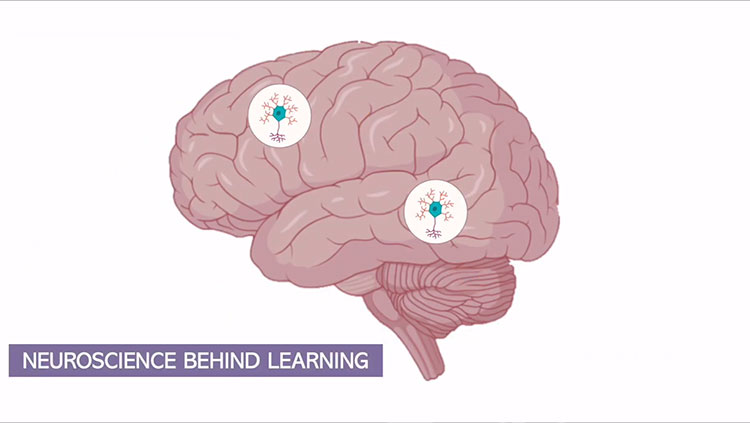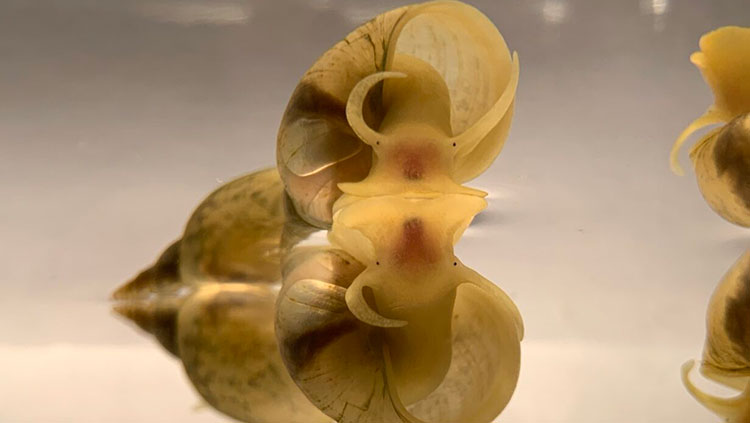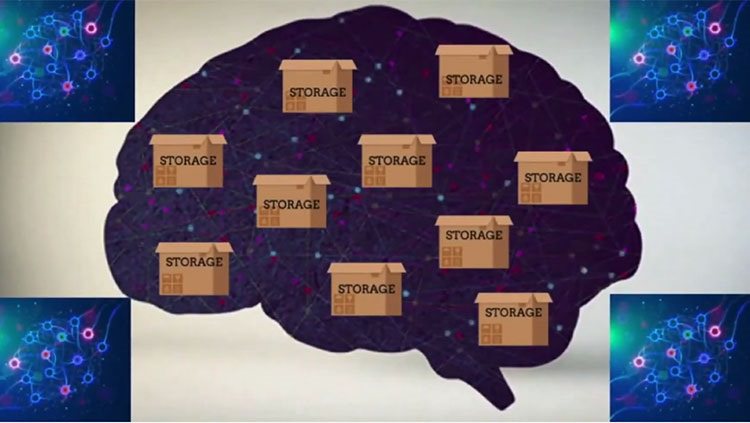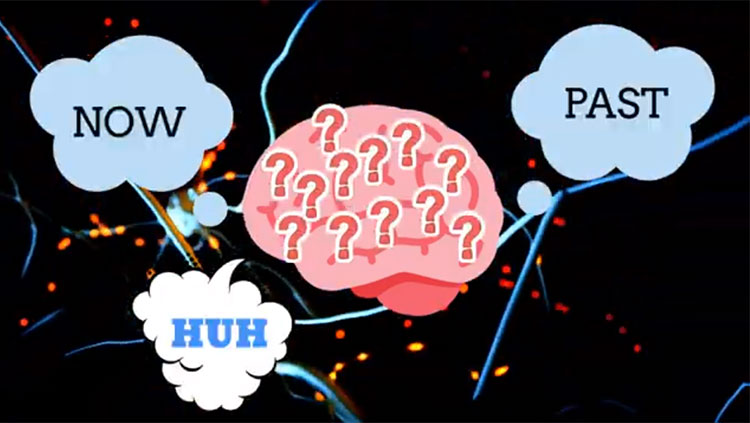Pavlov’s Flies
- Published10 Jan 2014
- Reviewed10 Jan 2014
- Author Michael W. Richardson
- Source BrainFacts/SfN
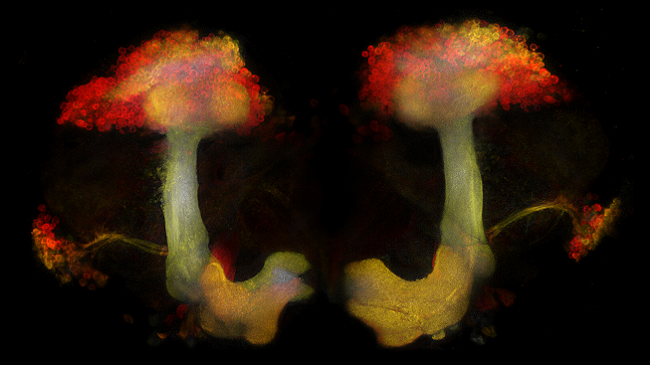
Remember Pavlov’s dogs, the trusty canines that were trained to expect food at the ring of a bell? Many animals learn about the world in a similar way, linking experiences to good or bad feelings and outcomes. Fruit flies are no different — they can learn to associate certain smells with reward or punishment.
This image shows a part of the fruit fly’s brain called the mushroom body, the structure where researchers believe the memories of these associations are stored. The bulging caps are made up of dendrites that receive information about smells and reward/punishment signals from other nerve cells. The stalk, made up of axons, relays this information to other parts of the nervous system. Researchers believe that during learning, odor and reward/punishment signals are linked, forming memories that allow the fly to quickly distinguish good smells from bad.
CONTENT PROVIDED BY
BrainFacts/SfN




